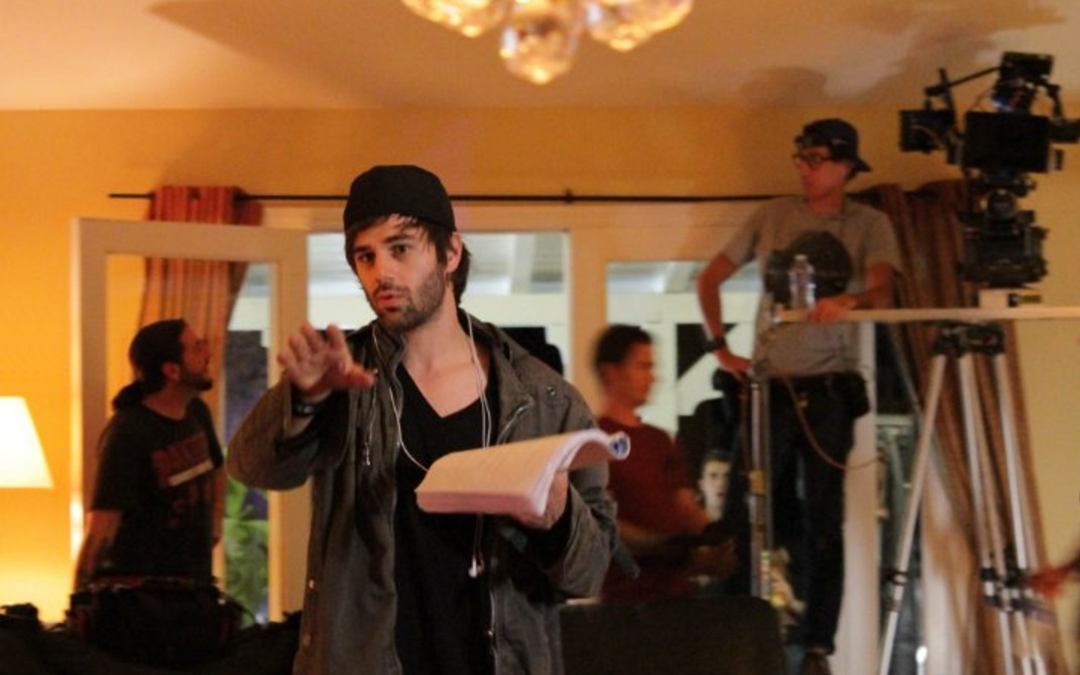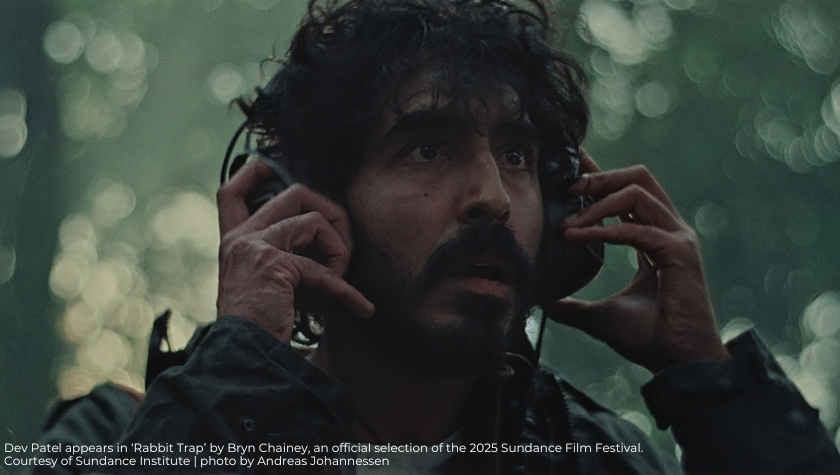Writing Visceral Horror: Interview with 'Daddy's Head' Creator Benjamin Barfoot
October 23, 2024
Benjamin Barfoot, a screenwriter, director, editor, and composer, is a self-taught filmmaker and self-proclaimed jack-of-all-trades. After getting his start in shorts and animation, he’s moved on to bigger and more ambitious projects—which brings us to his second feature, the Shudder Original Daddy’s Head which just premiered at Fantastic Fest.
The film tells the unsettling story of a boy and his stepmother who find themselves confronting an eerie creature that bears a striking resemblance to the boy’s recently deceased father. This unique blend of psychological tension and supernatural elements creates a layered narrative focused on fear and family.
Final Draft sat down with Barfoot ahead of the film’s release, and he shared his insights into his screenwriting process, specifically how he approaches ideation and when he feels a revision is “smooth” enough.
From developing the core idea to refining the screenplay draft by draft, Barfoot discusses his methods to shape his story and ensure it resonates emotionally and narratively. (And, as he told us, he did it all in Final Draft.)
Daddy’s Head is currently streaming on Shudder.
Daddy’s Head Official Trailer | Coming October 11 | Shudder
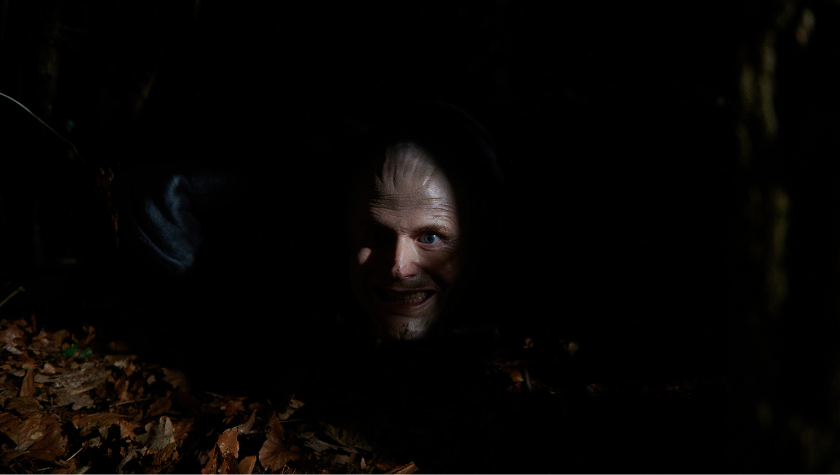
Final Draft: I want to begin with where you started on this script. How did you develop the screenplay?
Benjamin Barfoot: I had a shot in my head. I came up with it in my early twenties. It was this little boy lying in bed, and his father coming up and smiling at him. He had this very intense smile. And I saw it as a shot looking at the father, and then the camera just twisted around in my head. And as you revealed the back of him, you were like, “Oh,” and it’s not his father.
I always really liked it. It’s an image that just stuck and stuck and stuck, and I almost forget about it at times. And I remember going, “That’s shot.” And then 10 or 15 years later, I can remember randomly standing in my kitchen and thinking, “Well, if that was a film, what would it be?”
I don’t always do it, but it does happen a lot. The cinema in my head plays, and I watch. I don’t really remember lots of conscious thoughts. “Then this will happen.” That is going on.
Obviously, I’m questioning things or looking at stuff, but it writes very quickly in my head almost like over 40 hours. I’m doing something, and I go back and look at it again and go, “Oh yeah, then that would happen. And then this would happen.”
And it becomes very organic. It’s like a dream that I’m watching. I didn’t write anything down. I kept it in my head for probably another five or 10 years, but always thought, “I really like that.” And it wasn’t until Matt Wilkinson, the producer of Stigma Films who had done my first film [asked], “Do you have a horror?” And I was like, “Yeah, I’ve got this film.” It was immediately clear in my head, Daddy’s Head—do that one, do that one.
I had to dial it a little bit for horror. I just made a few tonal changes rather than story or structure changes.
Final Draft: I feel like when I’m writing something, my process is very similar in that I’m daydreaming it through, and it makes it a little easier when you actually go to the page.
Barfoot: It does. It’s weird, the process of actually sitting at a keyboard, it’s like I go “buzz,” and I go into this mode. I can’t really do it when I’m just sitting around thinking about it so much. When it’s writing, I write something, and then someone [in my imagination] says something. Do you know what I mean? And then I go, “Oh,” and I write it down.
I think when writers talk about, “It all came together in the last moment,” it’s because everything falls into place, and it’s like playing the piano, isn’t it? You’re just trying to, “Quick, get down what they’re saying!” Because your mind has gone so in sync with the film that you’re just trying to write down the performances and what’s happening.
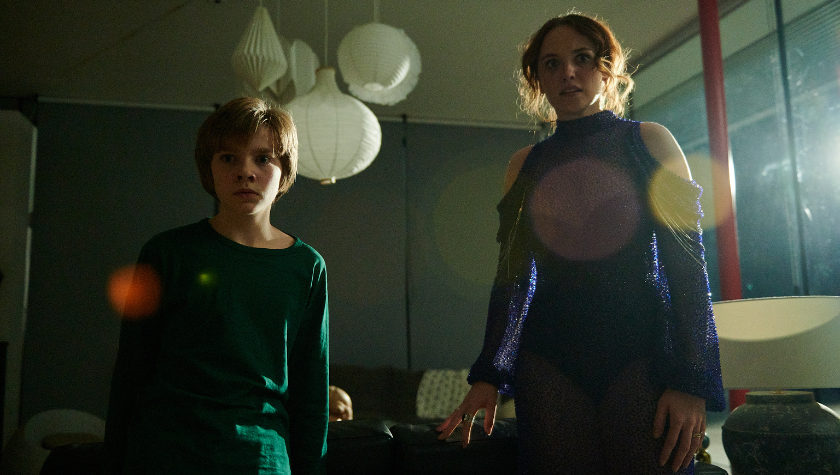
Final Draft: Structurally, it was interesting that you started with an older version of the main character, and then you flashed back. Was that always the way that you saw it in your head?
Barfoot: No. That was, again, Matt Wilkinson. He saw the film, he said, “I think you need to top and tail it.” How it had been was that you start with this little boy and it obviously goes towards the end where it’s very intense with Laura [Julia Brown] and Isaac [Rupert Turnbull] and shouting, and then it cuts, and you see this character.
And that is one of the things that you would be able to understand in the script. But script and film don’t always necessarily combine. So when the audience saw it, they’re like, “Who’s that guy?” And that wasn’t the effect that I wanted. “Who’s this bloke?”
And so by topping and tailing it, when we go back to the end, we’re like, “Oh, God, yeah, we’re here.” So that had a more succinct effect. It rolled the audience onto the ending then.
Final Draft: So now that we know how you write, how do you face challenges with a difficult scene?
Barfoot: The conversation between Laura and Robert [Nathaniel Martello-White] where the film stops for a little bit. That was a very stripped-down scene, and there’s nowhere to really run with that scene. There’s nothing I can do. I’m like, this is just about dialogue and characters and performance. On the one side, I’m probably throwing a gauntlet down to myself. “Come on, you can do it.”
For someone like me, I’ve been writing for years, but I got taken seriously as an editor then eventually even VFX and directing. But writing was always happening in the background. I was very much, out of all the skill sets I have, very nervous around it and scared.
So, for a scene like that where there’s nowhere to run, over the years, I had just rewritten that scene over and over and over again. By rewriting a scene over and over again, what you realize is you’re just practicing. Just practicing and practicing and practicing until you read it one day and go, “Pretty good, actually.” That’s what polishing is like, isn’t it? So that’s all you’re doing. You’ll keep doing it until you’re like, “Oh, I’ve got better.” And then it got better. That’s the biggest challenge.
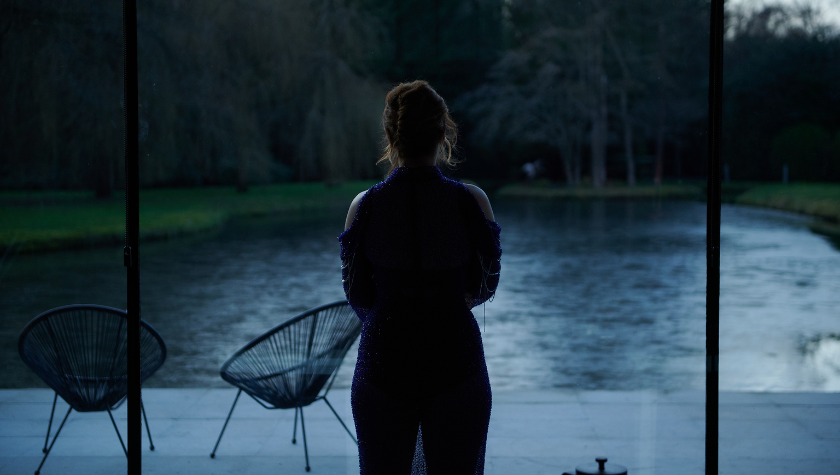
Final Draft: The revision process, especially in a heavy dialogue scene, can be very challenging.
Barfoot: Yeah ... I’m quite multi-skilled. I get it from my father. He’s a carpenter, electrician, architect, engineer—anything around buildings, he’s just mental. He knows everything about it. And I’m not saying that’s necessarily me as a filmmaker, but I just look at him, and I go, I’m like the filmmaking version.
I get really into the art of editing. I get really into the art of screenplay. I get really into trying to get a visual effect shot really good. I composed the score for this film, as well, and the process is always the same.
I can’t describe it any more than it’s like feeling a grain of wood, and you feel the bumps on your fingers as you do it. It’s like that when you’re reading dialogue.
I call it the “slide” for how I try and write a script. Which is that you should get at the top and go “whoosh,” and you should just slide down it. And there should be no bumps, there should be nothing. You should be like, “Whoa. I’m at the end.”
Music’s like that, visual effects are like that, editing’s like that. I’m editing it, and I’m editing it. I’m just trying to get it perfect. That’s the one element I think that’s combined in all art to a degree.
Final Draft: Since you mentioned that you had to skew your work a little bit more toward horror, what did that look like for this script?
Barfoot: Yeah, there was a mother and a son and something communicating with the boy that the mother was watching. It was the relationship between them all. I think there was a bit more drama in it. It was still kind of horror, but you saw a lot more of the relationship with them. There was a lot more of that.
It’s ... 90 minutes, and it was a two-hour cut that I put together with all the material in. And even that two-hour material, I had lost so much stuff for the budget. I probably had a two-and-a-half-hour version of the film, which doesn’t necessarily mean, “Oh, that must have been a great version.”
But all of that stuff that was lost, in the end, I had to lose drama. I had to hold onto the horror because they were the elements that essentially people were paying the budget for and were going to work. “I’m not buying a drama, I’m buying a horror.” So, I had to refine it in that sense and change the tone based on the compromises that you have no choice but to make within filmmaking.
The nicest thing is I think I’ve probably managed to hold on to enough or reduce it enough that it’s still very much there. Some of the dramatic elements.
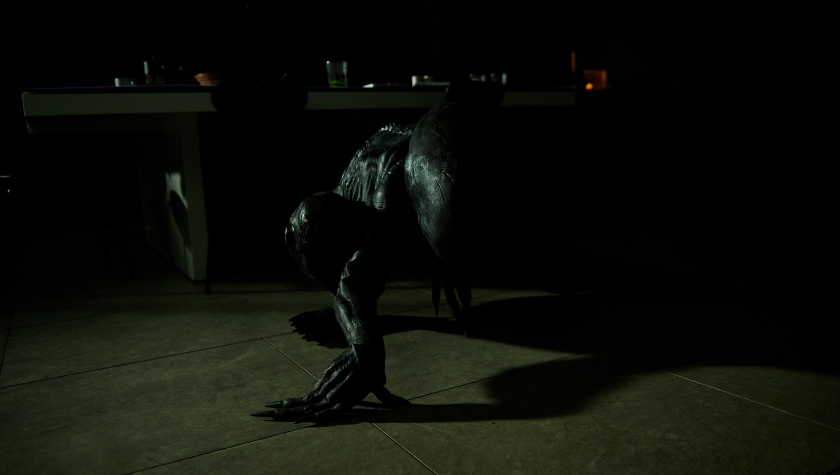
Final Draft: Do you have advice for writing in the horror genre?
Barfoot: I think David Lynch says, “A piece of advice I give you is go and sit in a cafe. So when you go deep and dark inside yourself, and you reach in and find all these strange things, when you come back out again, you are in a cafe.”
I understand what he’s saying. If [you’re] trying to write these things, you’re going to a place where you want to make yourself shudder, and there are ways of doing that. ... I can really just disappear into my head. But what I would say is that’s only one side of what makes a good horror film. All you’ve got there is just one aspect, which is, maybe you could call it the “visceral” or whatever part of a film.
You’ve still got a whole massive section, which is the story, and how that story relates to that feeling and that emotion. You can’t just have an emotional dramatic story and then keep walloping in these, because it’s not synced. You’ve got to try and find a way to blend your characters and their emotions and the force of the story in with the things that are making you go and how you do that and how succinct you get. That is probably the difference between writing a good script and a bad script, I’d say.
Final Draft: Do you have any other advice?
Barfoot: It’s an organic process. There’s only one way of getting better at it, and that’s write. Write, write, write, write. And it’s the most awful and painful experience to keep reading all this, going, “This is rubbish.”
But actually your skill of knowing what is rubbish and what is good is the skill that will get you to getting good. So it’s okay to be rubbish, because you’re identifying it as rubbish. If you thought it was good, you’re going to stay rubbish.
Written by: Jo Light
A recovering Hollywood script reader, Jo spent several years in story development, analyzing screenplays for the likes of Relativity Media and ICM Partners while chasing her own creative dreams. These days, she juggles writing for industry leaders Final Draft, ScreenCraft, and No Film School, teaching budding writers at the college level, and crafting her own screenplays—all while trying not to critique every movie she watches.

